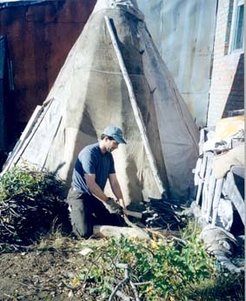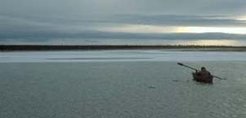Hunting and Property Strategies in the Taimyr Region

In the Taimyr Autonomous Region, an Arctic sub-unit of Krasnoyarskii Krai, in central Siberia, a variety of property relations have taken form in indigenous communities since the fall of the Soviet Union, in 1991. Two types of property established during the Soviet period, including both formally assigned territories and common-pool zones immediately surrounding each village, have been augmented by a third type. The newest arrangement, termed the 'family-clan holding' and more recently 'territory of traditional nature-use', is based on a formal claim with the state. While these arrangements and other legal measures have been adopted in recent years to promote the interests of indigenous Siberian communities in the post-Soviet period, collective bargaining with the regional government has been weak for lack of money and expertise, and thus, few people have ventured to make formal land claims. In addition, the collapsing state-sponsored rural economy in the Taimyr Region after 1991 has favored indigenous subsistence hunting and fishing as the preeminent mode of production. Concomitant changes in property relations have occurred. Two primary questions were asked: 1) What conditions favor the transformation of assigned territories into commonly held territories? And 2) Why is it that formal land claims (clan holdings) are not very widespread among an indigenous population pursuing an agenda of self-determination vis-à-vis a national government?
A total of twelve months of field research took place in and around the settlement of Ust Avam between 1994 and 1997. In 2001, a return visit for four months allowed me to update the situation there. Currently, both Dolgan and Nganasan people inhabit Ust Avam (population 665) and the surrounding tundra, along with a minority of non-natives from other parts of the former Soviet Union. Ethnographic study and participant observation were combined with socio-demographic survey in Ust Avam and archival research in the regional capital, Dudinka, to evaluate the costs and benefits of each type of property relation. On some 120 foraging excursions with Dolgan and Nganasan hunters, I documented production techniques and use of renewable resources. Structured interviews among 79 of 164 households in Ust Avam included questions on the topics of economic exchange, family land-use history, sharing patterns, incomes, consumption requirements, and
Results

A number of factors when taken together appear to favor common-pool land tenure in the study community, including ancestral proscriptions against overhunting; cross-cutting genealogical- and affinal-kinship relationships; cooperative hunting; non-market distribution of meat and fish; and economic leveling; as well as the migratory nature of the prey species, the distance from urban centers, and the high cost of transportation due to the lack of roads. Boundaries of hunting territories and favorite spots in the common pool zone are not defended as private property. Rather, social boundaries, maintained through cooperation of close bilateral kin and other local hunters, are implemented to manage the use of common hunting grounds. Non-local people are the most likely not to be included in user groups.

